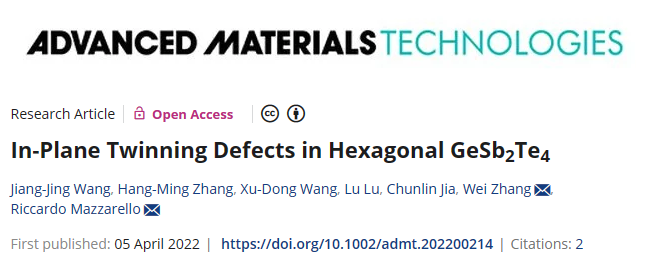
Ge–Sb–Te (GST) alloys are an important family of phase-change materials employed in non-volatile memories and neuromorphic devices. Conventional memory cells based on GST rely on the switching between an amorphous state and a metastable, disordered rocksalt-like phase. Recently, however, it has been proposed that a special type of defect in layer-structured GST—the so called “swapped bilayer” defect—is responsible for a novel phase-change mechanism observed in GST-based superlattices. Thus, disorder appears to play an important role in both types of switching mechanisms. Here, the observation of a new in-plane twinning defect in hexagonal GeSb2Te4 by direct atomic-scale imaging experiments is reported, which serves as the key ingredient to account for the abundance of inverted stacking faults in hexagonal GST and superlattices. Ab initio simulations reveal a low energy cost for these extended defects, and indicate that such defects can affect the electrical properties by inducing electron localization. This work provides additional insight into the nature and effects of structural disorder in GST phase-change materials.
Link:https://onlinelibrary.wiley.com/doi/10.1002/admt.202200214